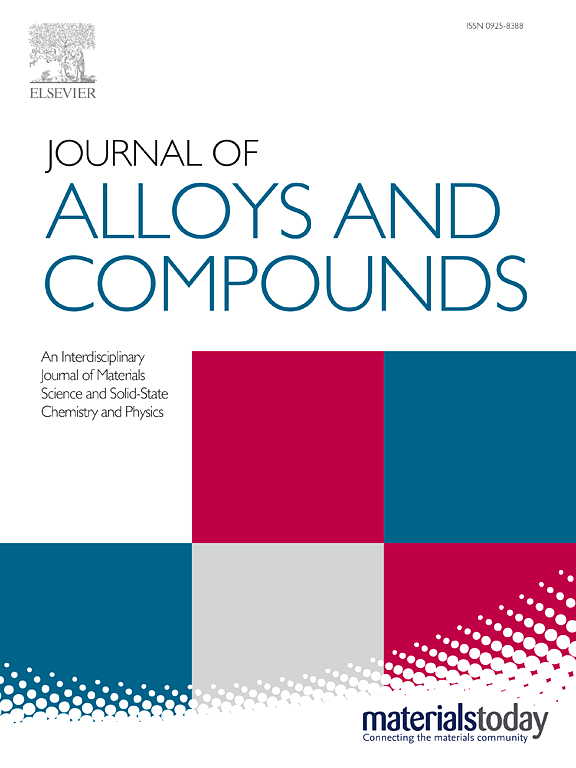Reduction of Ilmenite and Preparation of Titanium-Based Carbides in the CH4-H2 System
IF 5.8
2区 材料科学
Q2 CHEMISTRY, PHYSICAL
引用次数: 0
Abstract
Titanium carbide, which exhibits extensive applications across diverse fields, is the focus of this study on its synthesis from low-grade ilmenite in the CH4-H2 system. Taking the reduction temperature range of 1100 °C to 1350 °C as a starting point, a distinct "M"-shaped relationship between temperature and the carburizing rate is observed. Metallic iron is recognized as a crucial factor influencing the synthesis of titanium-based carbides from ilmenite, with its accumulation closely linked to the carburizing rate of the reduction products. At 1100 °C -1200 °C, increasing the temperature promotes the aggregation and growth of iron, resulting in an increased carburizing rate of the products. At 1225 °C -1300 °C, most of the metal iron dissolved carbon and transformed into molten state. As the temperature increases, the fluidity of the molten iron improves, allowing it to accumulate and grow, thereby reopening the pores in the matrix and rebounding the carburizing rate. At 1350 °C, the dripping of molten iron causes the pellets to soften and fall, leading to a sudden decrease in the product's carburizing rate. The morphological characteristics of reduced ilmenite pellets demonstrate that as the temperature increases, the wettability of metallic iron and carbide shifts from a non-wetting to a wetting. The reduced product-metallic iron-interconnects and aggregates the dispersed reduced ilmenite into a cohesive mass that encases the TiCxO1-x, which results in the incomplete carburization of the ilmenite. This study provides theoretical support for the preparation of carbides by gas-based reduction of ilmenite.钛铁矿在CH4-H2体系中的还原及钛基碳化物的制备
碳化钛具有广泛的应用领域,本研究的重点是在CH4-H2体系中以低品位钛铁矿为原料合成碳化钛。以1100℃~ 1350℃的还原温度范围为起点,温度与渗碳速率呈明显的“M”型关系。金属铁是钛铁矿合成钛基碳化物的重要影响因素,其富集程度与还原产物的渗碳速率密切相关。在1100℃~ 1200℃时,温度的升高促进了铁的聚集和生长,导致产物渗碳速率的提高。在1225℃-1300℃时,金属铁大部分溶解碳,变为熔融态。随着温度的升高,铁液的流动性提高,使其能够积聚和生长,从而重新打开基体中的孔隙,并使渗碳速率反弹。在1350℃时,铁水的滴入导致球团软化和下落,导致产品的渗碳率突然下降。还原钛铁矿球团的形态特征表明,随着温度的升高,金属铁和碳化物的润湿性由非润湿性转变为润湿性。还原产物-金属铁将分散的还原钛铁矿相互连接并聚集成一个包裹TiCxO1-x的粘性团块,导致钛铁矿的不完全渗碳。该研究为钛铁矿气基还原法制备碳化物提供了理论支持。
本文章由计算机程序翻译,如有差异,请以英文原文为准。
求助全文
约1分钟内获得全文
求助全文
来源期刊

Journal of Alloys and Compounds
工程技术-材料科学:综合
CiteScore
11.10
自引率
14.50%
发文量
5146
审稿时长
67 days
期刊介绍:
The Journal of Alloys and Compounds is intended to serve as an international medium for the publication of work on solid materials comprising compounds as well as alloys. Its great strength lies in the diversity of discipline which it encompasses, drawing together results from materials science, solid-state chemistry and physics.
 求助内容:
求助内容: 应助结果提醒方式:
应助结果提醒方式:


